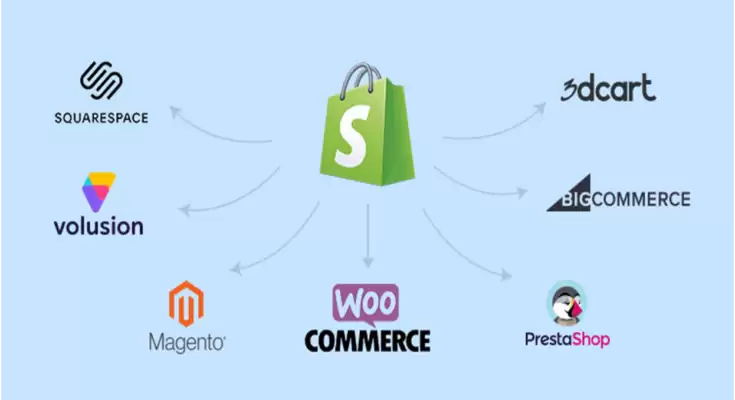Video games have existed as a form of entertainment for over half a century. The first commercially successful arcade machine, the Pong, celebrates its 50th anniversary this year.
Compared to this, crypto gaming is a whole new field. It started in 2021 with a series of events: the NFT craze, the popularity of Axie Infinity, the rise of blockchain gaming, Zuckerberg’s announcement of Meta, and the Metaverse craze.
An area of differentiation comes from understanding the following: Play-to-Earn, blockchain games, GameFi, NFT games, metaverse, Web3 and Web 3.0.
According to some sources including Wikipedia, the first known crypto game was CryptoKitties. Its main purpose is to collect NFT cats and breed them to obtain more and more unique and rare species. Exciting gameplay isn’t enough, I know, especially knowing good examples of collecting animatronics games like Neko Atsume.
However, the first NFT games, including CryptoKitties, were aimed at leveraging blockchain technology in the gaming space. This is the first game where you can own your characters as NFTs and transfer them to other platforms such as marketplaces. Pioneers are not perfect.
Also, the idea of the Ethereum blockchain, which was originally built on top of NFT games, was created by Vitalik Buterin after he lost his character gear after the World of Warcraft update. He understands that if the project is highly concentrated, it’s easy for developers to take digital items earned with “sweat and blood” from you.
As such, non-fungible token (NFT) technologies that offer “real” ownership seem best suited to the gaming space. CryptoKitties is solely focused on collecting and creating new NFTs. Moreover, the logic of the game is completely based on blockchain technology.
Therefore, an NFT game is usually an idle game for the purpose of collecting NFTs.
Play-to-Earn isn’t always about cryptocurrencies
Compared to the first NFT game, Axie Infinity goes one step beyond just building on the blockchain. Yes, its gameplay is similar to NFT gaming from the beginning. However, the logic of the game is no longer entirely based on the blockchain.
Additionally, with the introduction of an internal crypto-economy, the game expanded its revenue mechanism; now the way to make a profit is not just by cultivating Axies and selling them on the market, but by grinding the internal currency, Smooth Love Potion (SLP) and Axie Infinity Shards (AXS) and exchange them for stablecoins, katana, on an internal decentralized exchange.
So far, Axie Infinity has become a “real” money-making game. So we got to the point where it was really important to mention one thing.
Play-to-earn is just a monetization model, not a game genre.
Before crypto gaming existed, many MMORPGs used fiat-based auctions or secondary markets. Technically, these are purely for making money. However, the term is overused by marketers of crypto gaming projects, so it is only associated with blockchain.
In some cases, it even acquired negative connotations. For example, Steam bans all games that use cryptocurrencies, without even distinguishing between games built entirely on the blockchain or using encryption as a complement to other game mechanics.
Crypto Gaming vs Blockchain Gaming: What Are the Main Differences?
Undoubtedly, crypto games and blockchain games seem to be the broadest concepts that characterize the industry as a whole and a single game project as its unit. Also, sometimes people tend to use them as synonyms, which makes sense in some contexts but not everywhere.
“Irreplaceable” distinguishes the two terms based on how decentralized they are. For example, Decentraland is a blockchain game because it functions as a DAO and allows for a high level of creativity within the scope of creating games within the game. In contrast, Light Nite X only offers satoshis rewards and is itself a centralized project.
However, this approach is not accurate when it comes to games where there is something for both sides. But what about Bomb Crypto? It uses its native token Bombcrypto (BCOIN) as in-game currency and governance token?
When we talk about a complex ecosystem like Gala, it runs on both the Gala governance node and the Gala (GALA) cryptocurrency, but as a game development studio as well as a game publisher of its smaller studios, its definition is not yet clear.
Given the complexity of the field, let’s have a rule of thumb: “crypto gaming” is the broadest concept. It does include blockchain games, NFT games, and all Play-to-Earn with integrated encryption. As for “blockchain gaming,” it’s still a broad concept, but doesn’t include fully centralized projects that have less impact on crypto and NFTs.
For example, if Ubisoft integrated a published NFT into Ghost Recon: Breakpoint, it would be a crypto game, not a blockchain game. However, if the logic of the game completely stays on the blockchain, there is a dilemma whether to call the game a “blockchain game”.
It seems to me that this doesn’t work anymore. It has indeed become synonymous with crypto gaming: both DappRadar and Wikipedia consider these to be interchangeable concepts. Additionally, the number of games built solely on blockchain is declining.
How about GameFi?
Obviously, the word “GameFi” comes from “DeFi”, which means “decentralized finance”. At first, GameFi was called “DeFi-based games”. A common feature of such GameFi projects is that the team page contains cartoon characters rather than real people. Therefore, according to Google Trends, the term has some negative connotations and is not widely popular outside the region.
Generally speaking, GameFi combines three concepts: DeFi, NFTs, and blockchain-built games. However, as I mentioned, it was not well received by American and European audiences.
In addition, a Web3 company called “GameFi” added fuel to the fire.
Web 3.0 is the concept of the Semantic Web, provided by Tim Berners-Lee back in 2006. This is the next step in the evolution of the Internet, where machines understand meaning, and therefore semantics, not data structures.
On the other hand, Web3 is a newer concept provided by Gavin Wood, co-founder of Ethereum and creator of Polkadot. Based on the concepts of decentralization and improved data security, Web3 is one of the possible ways for the evolution of Web 3.0.
As for the term “metaverse,” it’s too broad to be associated with just encryption. The concept is widely used in science fiction and has only been associated with blockchain and decentralization in recent years.
In conclusion
A crypto game is any game that includes any form of encryption: in-game cryptocurrency or NFT technology. It can be centralized or decentralized.
A blockchain game is a crypto game that includes some kind of decentralization: nodes, governance tokens, etc.
GameFi is synonymous with blockchain games and is only widely used in Southeast Asian countries. Play-to-earn is just a monetization model. It has only been associated with crypto gaming in the last few years.
An NFT game is usually an idle game whose main gameplay is to collect NFTs. Web 3.0 is the concept of the Semantic Web, introduced by Tim Berners-Lee in the 1990s Based on the concept of decentralization, Web3 is one of the possible ways for the evolution of Web 3.0. It was created by Gavin Wood in 2014.











